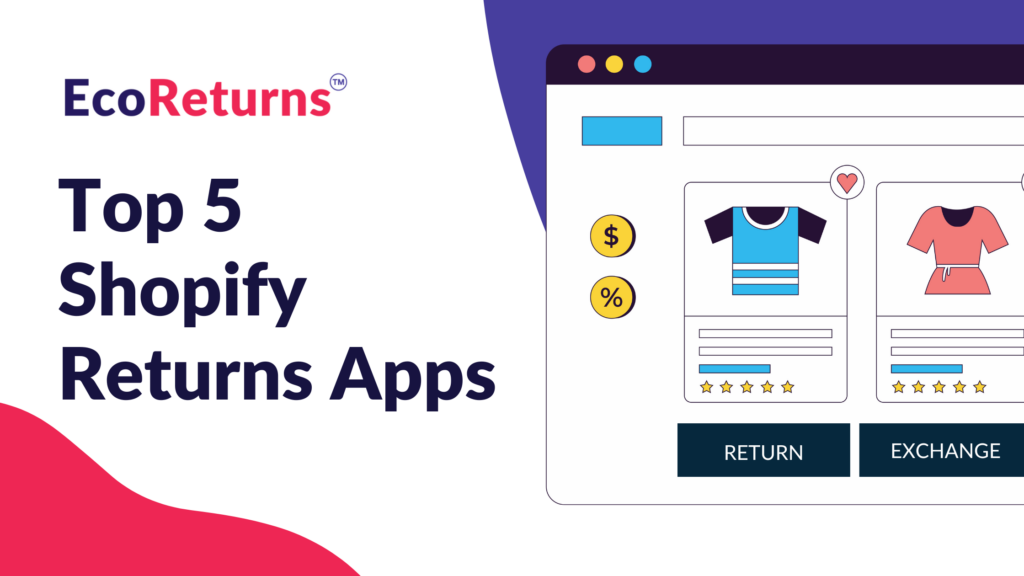Exchanges are an integral part of the eCommerce ecosystem, particularly within platforms like Shopify. They serve as a vital mechanism for customers to rectify any dissatisfaction with their purchases. Through exchanges, customers can return or swap products, ensuring their needs are met and enhancing their overall shopping experience.
It provides online retailers with a chance to address customer concerns swiftly, thereby fostering customer loyalty and trust. By facilitating seamless exchanges, retailers can prevent customers from abandoning their purchases or seeking alternatives from competitors.
Numerous factors may prompt customers to initiate an exchange within the Shopify framework:
- Product defects: In cases where a product arrives damaged or exhibits defects, customers rely on Shopify exchanges to obtain a replacement in optimal condition. Addressing these issues promptly is crucial for maintaining customer satisfaction and preserving the retailer’s reputation.
- Incorrect size or color: Oftentimes, customers may inadvertently select the wrong size or color when making a purchase. With Shopify exchanges, they have the opportunity to rectify these errors by exchanging the item for the correct size or color variant, ensuring they receive the desired product.
- Changed mind: It’s not uncommon for customers to experience a change of heart post-purchase. In such instances, Shopify exchanges offer a convenient solution, allowing customers to swap the original product for an alternative item that better aligns with their preferences.
By accommodating these various scenarios through Shopify exchanges, online retailers can foster a positive shopping experience, ultimately driving customer satisfaction and loyalty. Embracing efficient exchange processes not only mitigates potential losses but also contributes to long-term customer retention and business growth.
Now, the question is should you or should you not offer exchanges to your customers? Ask yourself these two questions before you decide on offering exchanges-
- How much is my recommerce ability?
If you are able to sell the items that have been returned for exchange, you must consider offering exchanges to shoppers. This way, you are both retaining customers and your revenue. - What is my gross margin?
If your gross margin is not more than 3 times your logistics cost, do not offer exchanges. High reverse logistics costs will eat up on your profits and will not be effective for your brand.
In an ideal scenario, product exchanges should be a smooth and easy process for both the customer and the online retailer. Especially if you are on Shopify, Shopify Exchanges are pretty easy to configure. A clear and concise return policy, readily available customer support, and an efficient exchange process can help minimize frustration and build customer loyalty.
Here are a few things you must know before setting up an exchange process for your shoppers:
Personalise Shopify Exchanges:
There are many returns solutions that allow shopify exchanges, but only on their platform. This creates a confusion among your customers as it does not give an appearance of your website. Consumers are wary to request an exchange, as they might not find the right product to exchange. Therefore, it’s crucial that you go for a returns solution that lets you offer exchanges on your website rather than its platform.
Payment Collection for Exchanges
If a customer requests a shopify exchange with a high-value product, you must ensure you have a payment system in place that lets you collect the extra payment. If there is an exchange request with a lower-value product, you must be able to refund the additional amount to the consumer seamlessly.
Quality Control of Exchanged Product
It’s important to check the quality of the product that is coming back to the warehouse. Based on your quality control, you may want to accept or reject the request.


Ease of Offering Exchanges with EcoReturns
- EcoReturns allows you to offer exchanges on your own website. It makes it easier for your shoppers to place an exchange request, where they can select items from your entire catalog or selected items of your choice. You decide what you want to offer as part of your exchange policy!
- EcoReturns does not take your customer outside of your website to place a exchange request. Main consistent branding with our return/exchange portal.
- With EcoReturns, you can collect payments with ease. You can either collect price difference if it is more than a certain value, or certain % of the product cost. It also allows you to partially refund the customer either in the mode of payment requested by the shopper or store credit.
- Our AI-powered product tagging automatically detects any kind of defects on the product even before it is shipped back to the warehouse.
Why are exchanges important in ecommerce?
Exchanges play a pivotal role in the realm of ecommerce, especially within platforms like Shopify. These mechanisms are crucial for a multitude of reasons. Firstly, they serve as a cornerstone for customer satisfaction by offering reassurance that products failing to meet expectations can be promptly returned or exchanged. This commitment to flexibility fosters trust and loyalty among customers, significantly boosting the likelihood of repeat purchases. Consequently, the integration of seamless Shopify exchanges not only enhances the overall shopping experience but also cultivates a robust relationship between merchants and consumers, ultimately driving sustained business growth.
How can product exchanges benefit customers and businesses?
For customers, product exchanges offer peace of mind, as they can return or exchange products that are not suitable for their needs. Additionally, exchanges can help customers to find a product that better meets their needs.
For businesses, exchanges can help to reduce return costs and increase customer satisfaction. By offering Shopify exchanges, businesses can encourage customers to purchase products with a higher price point, as they know they have the option to exchange the product if it does not meet their expectations. Additionally, exchanges can help businesses to identify areas where they need to improve their products or customer service, which can lead to increased sales.
Best practices for implementing product exchanges in eCommerce:
- Provide clear and concise return policies: Brands should ensure that their return policies are clearly stated and easy to understand. This will help customers to make informed decisions when purchasing products and reduce the number of returns due to misunderstandings.
- Offer multiple exchange options: Businesses should offer customers multiple options for exchanging products, such as in-store exchanges, mail-in exchanges, or store credit. This will provide customers with more flexibility and increase the likelihood that they will find a suitable exchange option.
- Offer free returns and exchanges: Offering free returns and exchanges can be a valuable incentive for customers, as it reduces the cost and inconvenience of returning or exchanging products.
- Respond promptly to customer inquiries: Brands should respond promptly to customer inquiries about returns and exchanges, as this will help to build trust and increase customer satisfaction.
- Continuously improve the exchange process: Businesses should continuously monitor and improve their product exchange process to ensure that it is efficient, customer-friendly, and cost-effective.
Conclusion
Product exchanges are an important aspect of ecommerce, as they allow customers to return and exchange products that they are not satisfied with and help brands retain their revenue. However, exchanges are only beneficial for your brand if you have a good profit margin. Even in case of international shipping, we recommend you to either offer partial refund or store credit which is supported by EcoReturns.



